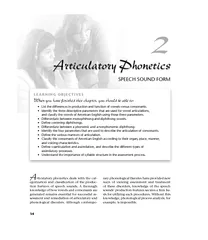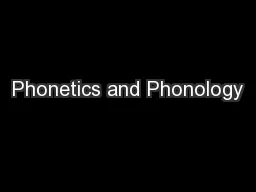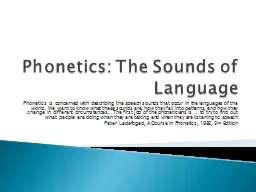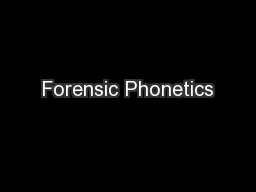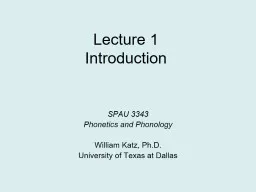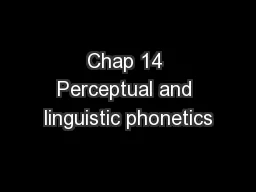PDF-CHAPTER rticulatory phonetics deals with the cat ego
Author : faustina-dinatale | Published Date : 2015-04-30
A thorough knowledge of how vowels and consonants are generated remains essential for successful as sessment and remediation of articulatory and phonological disorders
Presentation Embed Code
Download Presentation
Download Presentation The PPT/PDF document "CHAPTER rticulatory phonetics deals wit..." is the property of its rightful owner. Permission is granted to download and print the materials on this website for personal, non-commercial use only, and to display it on your personal computer provided you do not modify the materials and that you retain all copyright notices contained in the materials. By downloading content from our website, you accept the terms of this agreement.
CHAPTER rticulatory phonetics deals with the cat ego: Transcript
Download Rules Of Document
"CHAPTER rticulatory phonetics deals with the cat ego"The content belongs to its owner. You may download and print it for personal use, without modification, and keep all copyright notices. By downloading, you agree to these terms.
Related Documents

